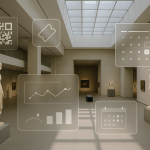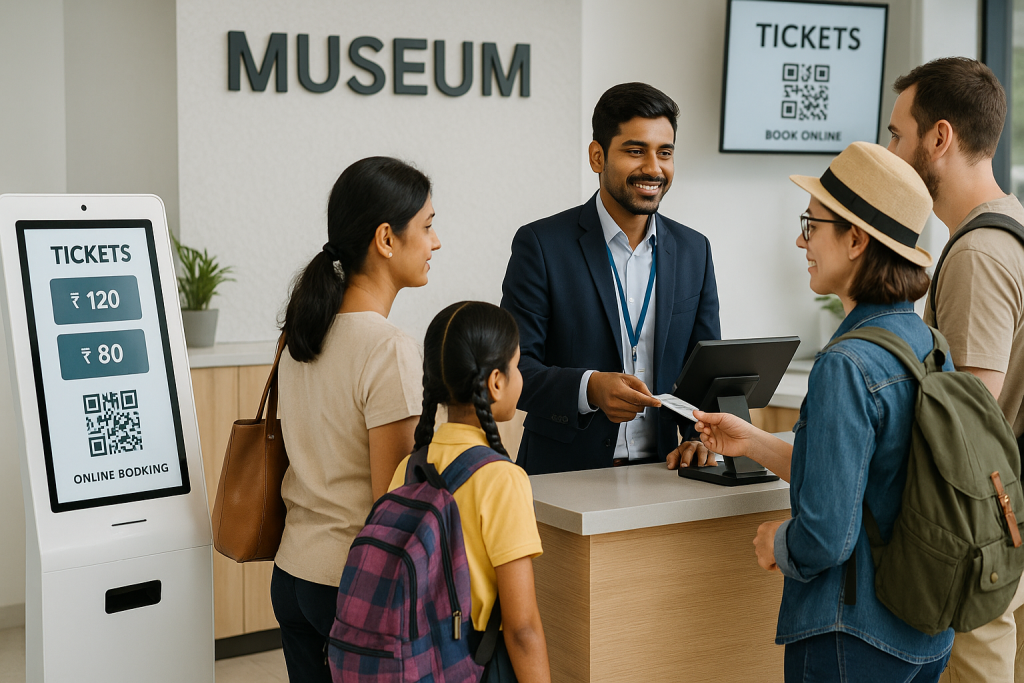A museum ticketing system has become essential for cultural institutions looking to streamline operations and enhance visitor experiences. While many museums still rely on traditional paper tickets and manual processes, the shift toward digital solutions is transforming how institutions manage everything from entry queues to visitor data.
Today’s museum visitors expect seamless online booking, contactless entry, and real-time information about exhibitions and availability. Meanwhile, museum administrators need better tools to track visitor patterns, optimize staffing, and reduce operational costs. A modern ticketing platform addresses both needs, offering institutions the technology to compete in today’s digital-first world while providing visitors with the smooth, efficient experience they expect.
In this blog, we’ll look at 9 powerful benefits of using a smart museum ticketing system and why it’s a must-have for tech-enabled museums that want to grow and scale.
1. Instant Online Ticket Sales
A digital museum ticketing system lets visitors book tickets anytime, from anywhere. Whether they’re planning ahead or buying at the last minute, your website or mobile booking page stays open 24/7.
This means no more waiting in long lines or dealing with last-minute chaos at the ticket counter. Visitors can choose their preferred time slots, pay online, and get their tickets instantly via email or SMS.
For your museum, this leads to fewer no-shows and better planning. You know how many visitors to expect, and you can prepare your staff and resources accordingly.
Online ticketing also reduces dependency on physical counters, saving time and staffing costs while giving your visitors the smooth, modern experience they expect.
2. Streamlined Entry with E-Tickets and QR Scanning
With a digital museum ticketing system, entry becomes quick and hassle-free. Visitors receive e-tickets with QR codes right after booking. At the entrance, staff simply scan the code, no need to check printed tickets or search booking records.
This helps avoid crowding at the gates and reduces wait times, especially during peak hours or special exhibitions.
It also minimizes human error. Since the system automatically validates each ticket, there’s no risk of double entries or fake passes.
The result? A faster check-in process, happier visitors, and a more professional experience right from the start.
3. Centralized Ticket Management Dashboard
Managing ticket sales across multiple channels can get messy especially if you’re using spreadsheets, emails, or separate systems. A modern museum ticketing system brings everything together in one dashboard.
From single tickets to group bookings, cancellations to reschedules, you can track and manage it all in real time. The system shows you how many tickets are sold, how many visitors to expect, and what time slots are filling up fast.
It also helps reduce confusion for your staff. With a clear view of all ticket activity, your front-desk and on-ground teams stay better informed and better prepared.
This kind of centralized control saves time, reduces errors, and makes your operations much more efficient.
4. Customizable Ticketing Options
Every museum is different and so are its ticketing needs. A good museum ticketing system gives you full flexibility to customize how you sell tickets.
You can offer time-slot bookings to manage crowd flow, set up special rates for school groups or senior citizens, and even add multilingual options for international visitors. Want to run a weekend-only exhibit or launch a seasonal pass? You can set it all up in just a few clicks.
Custom options make it easier for your visitors to find what fits them best and help your staff avoid confusion at the gate.
It also opens the door for creative promotions and better crowd control, especially during peak times or limited-time exhibitions.
5. Automation of Workflows
Manual ticketing creates extra work, printing tickets, checking names, handling payments, and updating records. It’s time-consuming, error-prone, and hard to scale.
An automated museum ticketing system takes care of these tasks for you. Once a visitor books a ticket, the system automatically sends confirmations, updates availability, and logs the details, no staff intervention needed.
You can also automate things like cancellation rules, refund policies, and group discounts. This cuts down on repetitive work and frees up your team to focus on more important tasks, like improving the visitor experience.
With automation, your museum runs smoother, faster, and with fewer mistakes.
6. Built-in Analytics and Reporting
Knowing what’s happening inside your museum is just as important as selling tickets. A modern museum ticketing system comes with built-in analytics that help you understand your visitors and your operations.
You can track which days are busiest, which time slots sell out fastest, and where your visitors are coming from. Want to know how well a special exhibition performed? The system gives you that data in just a few clicks.
These insights help you make smarter decisions like when to schedule more staff, which exhibits need more promotion, or what types of tickets to offer in the future.
With better data, you can grow your museum with confidence and strategy.
7. Better Visitor Flow and Experience
When too many people arrive at once, things can get chaotic, long lines, crowded galleries, and unhappy visitors. A smart museum ticketing system helps you manage this with ease.
By offering time-slot bookings and controlling entry through QR scanning, you can space out visitor arrivals and avoid overcrowding. This creates a smoother, more enjoyable experience for everyone.
Visitors spend less time waiting and more time exploring. Staff feel less pressure. And your museum leaves a lasting impression of being organized and visitor-friendly.
It’s a simple way to improve satisfaction and encourage repeat visits.
8. Integrated Marketing Tools
A good ticketing platform for museums doesn’t just handle bookings, it also helps you stay connected with your visitors.
With built-in marketing tools, you can automatically send confirmation emails, reminders, and feedback forms. You can also offer discount codes, promote upcoming exhibitions, and encourage visitors to return.
Some systems even let you segment your audience based on past visits or ticket types, so you can send the right message to the right people.
This kind of engagement keeps your museum top-of-mind and helps build stronger, longer-term relationships with your audience.
9. Scalability for Multi-Branch Museums
As your museum grows or if you manage multiple locations having one system that works everywhere becomes essential. A modern museum ticketing system makes it easy to scale without adding complexity.
You can manage all your branches from a single dashboard. Set different ticket types, timings, and pricing for each location, while keeping reporting and data centralized.
This means less duplication, fewer errors, and more control over your entire operation.
Whether you’re expanding to a new city or adding a new wing to your existing museum, your ticketing system grows with you without needing to start from scratch.
Conclusion
A modern museum ticketing system does much more than sell tickets. It helps you streamline daily operations, improve the visitor experience, and make smarter decisions with real-time data.
From online bookings and automated workflows to better crowd control and marketing tools — these 9 benefits show why digital ticketing is no longer optional for growing museums.
If your museum is ready to scale and serve visitors more efficiently, now is the time to upgrade.
Ready to take the next step?
Fill the inquiry form to Partner with EveryTicket, the digital ticketing platform built for Indian museums.



